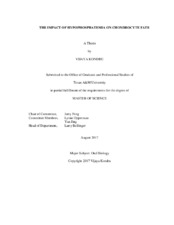| dc.description.abstract | Dentin Matrix Protein 1(DMP1) is a non-collagenous phosphoprotein, belonging to the Small Integrin small integrin-binding ligand, N-linked glycoprotein (SIBLING) family, the deficiency or mutation of which results in Autosomal Recessive Hypophosphatemic Rickets, as evidenced by the accumulation of hypertrophic chondrocytes, resulting in immature or “premature” bone formation and mineralization.
We employed cell lineage tracing (AggcretoDMP1-/-) together with other techniques to analyze the skeletal phenotype in DMP1 null mice at P10; these mice had shortened long bones and decreased circulatory levels of phosphate. While exogenous phosphate administration, in vitro, appeared to rescue the phenotype, we observed increased expressions of collagen 1 and osteopontin, together with high alkaline phosphatase activity (ALP) in the bone matrix, suggesting that these “accumulated” cells are actively differentiating into bone cells and secreting bone matrix; moreover, these bone cells were immature, and actively dividing, as indicated by decreased sclerostin (SOST) expression and increased Ki67 levels, respectively. However, while there was no apparent change in collagen 2 (Col2) and collagen 10 (Col10) expression, and Endomucin activity, Osterix and Runx2 levels were higher in the DMP1 control than in the KO.
In conclusion, there is increased chondrogenesis in a “hypophosphate” environment in DMP1 null mice; here, hypertrophic chondrocytes “persist” and differentiate rapidly into immature bone cells (they do not apoptose as previously believed). While exogenous phosphate positively influenced the secondary ossification center in long bones, further studies at different time points are necessary to demonstrate such an effect. Moreover, to demonstrate the influence of phosphate rich diet on phenotype, cell lineage tracing studies are warranted to study the cell transformation from chondrocytes to bone cells. | en |


